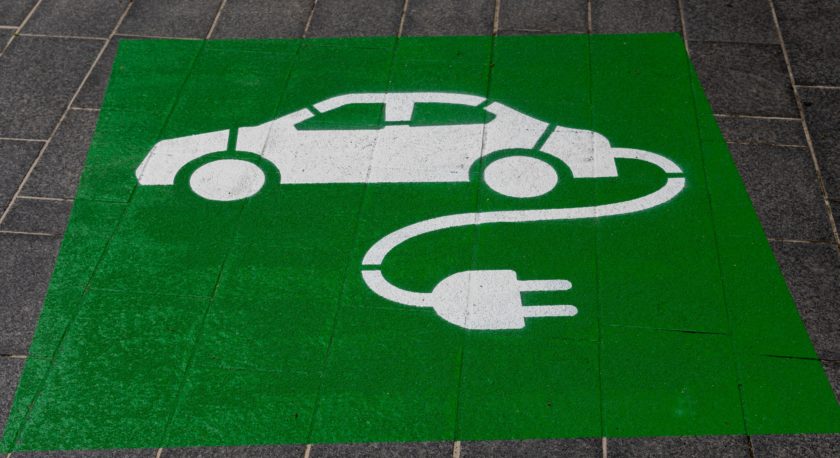Can the carbon emission ‘blip’ caused by the pandemic become the norm? Eli Koen, fund manager, UBP Positive Impact Emerging Equities fund looks at the market indicators.
Although there is no apparent direct link between Covid-19 and the carbon transition, Covid- 19 created a unique moment causing carbon emissions to momentarily plummet as the world’s industries ground to a standstill. Coverage of the effect on emissions through the halting of global travel during the height of the Covid pandemic provided a once-in-a-lifetime opportunity to observe the effect of carbon emissions and human travel on the earth and the environment we coinhabit.
As skies emptied and roads were left deserted, the waters running through the canals of Venice cleared, and citizens in Northern India beheld a view of the Himalayan mountain range for the first time in their lives as the veil of pollution was momentarily lifted.
If these positive outcomes, from what was an otherwise extraordinarily trying year, were to be a mere flash in the pan, the history books would likely enshrine on our collective efforts in the aftermath of Covid-19 as piecemeal and ineffectual lip-service.
However, encouragingly, the blip in emissions seems to be more substantive than this, with recent recovery plans across the globe signalling a significant shift in attitudes towards carbon transition. There has been a higher than expected “green” content in these outlined plans, with the pandemic serving as an accelerator in the push towards carbon-neutral economies and reduced emissions plans.
Major players have come back to the climate change negotiating table. China, followed by Japan and South Korea, have announced targets for carbon neutrality in their economies. Combine this with the change in the US presidency and America resuming their key leadership on the issue and setting ambitious 2030 targets. This new wave of support for tackling climate issues is set to stay, and the hope is that by the time some of the world’s heaviest polluters gather at the UN Climate Change Conference in Glasgow on November 1st they will have revised and enhanced their targets.
These amendments and many countries’ renewed commitment to addressing carbon emissions has led to a potentially bright future for stocks that enable energy transition.
The trend of favourable regulatory decisions for this market is expected to continue, with many long-term commitments still needing to become a reality.
Alongside this, the increasing price of carbon in the European Union to over €50 per ton for the first time will continue to push more and more companies to review their plans for the future, leading to a demand for these carbon transition enablers.
Rise of Electric Vehicles
Developing concurrently as a consequence of companies needing to reduce their emissions,
the rise of Electric Vehicles (EVs) in the transport mix is a trend expected to continue for years to come. Carmakers will have to comply with squeezed emissions targets for their overall fleet, which will give them no choice but to invest in EVs as a way of meeting the increasing ambition targets set out by governments in their drive towards carbon-neutral economies.
Recently, three automotive giants have rolled out their strategy that signals an even brighter future for EVs than had previously been expected.
Tesla, a leader in the EV space, has targeted major improvements over the next three years to the range of their vehicles and the battery cost to make EVs a more viable option in the short-term future.
Volkswagen (VW) has made it clear that they intend to rival Tesla’s leadership in this space, announcing plans to build six new European battery factories and investing $400mn in charging infrastructure across Europe. VW also intends for EV sales to equate for 60% of their units sold in Europe and 50% globally by 2030.
While both these announcements are vital to the push towards the adoption of EVs, they were not surprising. What may be the strongest indication yet that the push towards EVs is becoming irreversible came from General Motors’ (GM) CEO, who announced plans to transition the company’s entire portfolio of light vehicles to become 100% battery electric by 2035 and completely carbon-neutral by 2040. As far as we know, becoming the first car company to set a 100% EV target by a specific date.
These announcements enhance the belief that sales of Internal Combustion Engine (ICE) vehicles may have peaked in 2018 and that the last remaining obstacles to battery electric vehicle adoption have been removed – cost, driving distance, charging infrastructure and charging time.
Impact investing, specifically investing in companies that produce positive global outcomes (rather than just incorporate ESG considerations into their business models), has a golden opportunity now to build on the surprise successes of the last 18-months and ensure that global ‘fixers’ – especially those enabling a transition away from carbon and ICE vehicles – can grow and succeed. We hope we can make this climate-positive ‘blip’ the everyday.
Image: michael-marais-HjV_hEECgcM-unsplash




































